Gyuhyeon Nam
Improving Robustness of Diffusion-Based Zero-Shot Speech Synthesis via Stable Formant Generation
Sep 14, 2024



Abstract:Diffusion models have achieved remarkable success in text-to-speech (TTS), even in zero-shot scenarios. Recent efforts aim to address the trade-off between inference speed and sound quality, often considered the primary drawback of diffusion models. However, we find a critical mispronunciation issue is being overlooked. Our preliminary study reveals the unstable pronunciation resulting from the diffusion process. Based on this observation, we introduce StableForm-TTS, a novel zero-shot speech synthesis framework designed to produce robust pronunciation while maintaining the advantages of diffusion modeling. By pioneering the adoption of source-filter theory in diffusion TTS, we propose an elaborate architecture for stable formant generation. Experimental results on unseen speakers show that our model outperforms the state-of-the-art method in terms of pronunciation accuracy and naturalness, with comparable speaker similarity. Moreover, our model demonstrates effective scalability as both data and model sizes increase.
Good Neighbors Are All You Need for Chinese Grapheme-to-Phoneme Conversion
Mar 14, 2023



Abstract:Most Chinese Grapheme-to-Phoneme (G2P) systems employ a three-stage framework that first transforms input sequences into character embeddings, obtains linguistic information using language models, and then predicts the phonemes based on global context about the entire input sequence. However, linguistic knowledge alone is often inadequate. Language models frequently encode overly general structures of a sentence and fail to cover specific cases needed to use phonetic knowledge. Also, a handcrafted post-processing system is needed to address the problems relevant to the tone of the characters. However, the system exhibits inconsistency in the segmentation of word boundaries which consequently degrades the performance of the G2P system. To address these issues, we propose the Reinforcer that provides strong inductive bias for language models by emphasizing the phonological information between neighboring characters to help disambiguate pronunciations. Experimental results show that the Reinforcer boosts the cutting-edge architectures by a large margin. We also combine the Reinforcer with a large-scale pre-trained model and demonstrate the validity of using neighboring context in knowledge transfer scenarios.
KoDF: A Large-scale Korean DeepFake Detection Dataset
Mar 18, 2021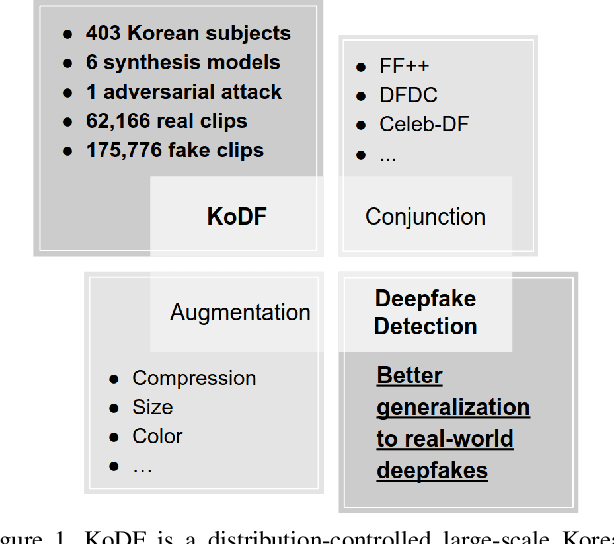

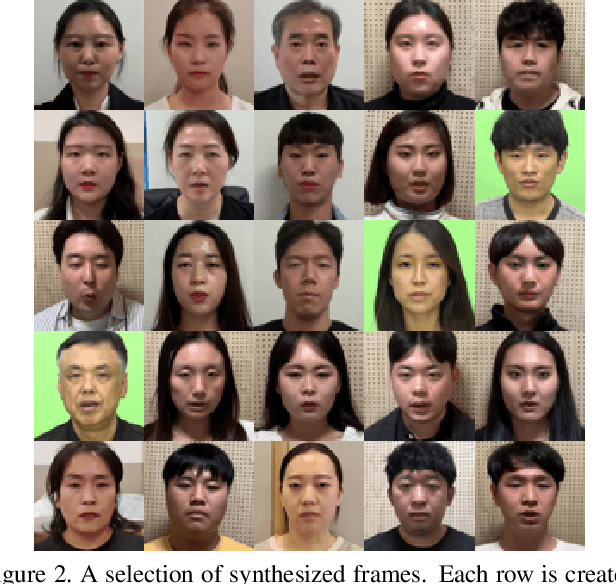
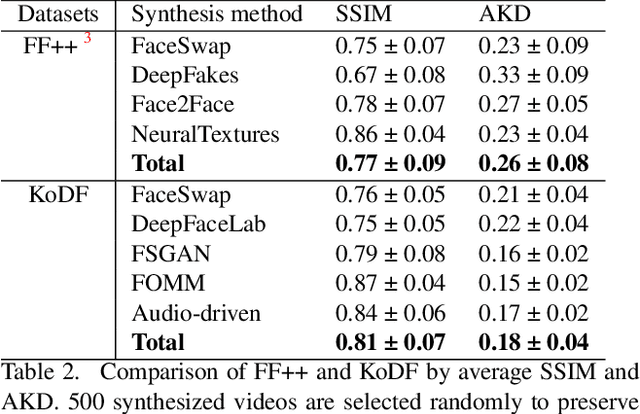
Abstract:A variety of effective face-swap and face-reenactment methods have been publicized in recent years, democratizing the face synthesis technology to a great extent. Videos generated as such have come to be collectively called deepfakes with a negative connotation, for various social problems they have caused. Facing the emerging threat of deepfakes, we have built the Korean DeepFake Detection Dataset (KoDF), a large-scale collection of synthesized and real videos focused on Korean subjects. In this paper, we provide a detailed description of methods used to construct the dataset, experimentally show the discrepancy between the distributions of KoDF and existing deepfake detection datasets, and underline the importance of using multiple datasets for real-world generalization. KoDF is publicly available at https://moneybrain-research.github.io/kodf in its entirety (i.e. real clips, synthesized clips, clips with additive noise, and their corresponding metadata).
GAN Vocoder: Multi-Resolution Discriminator Is All You Need
Mar 09, 2021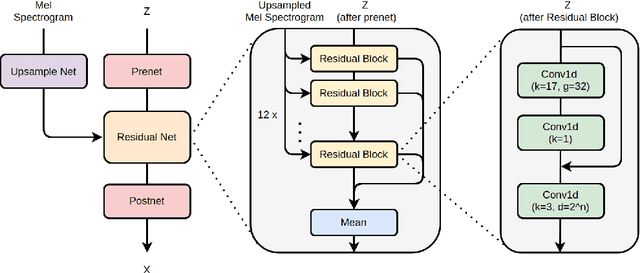

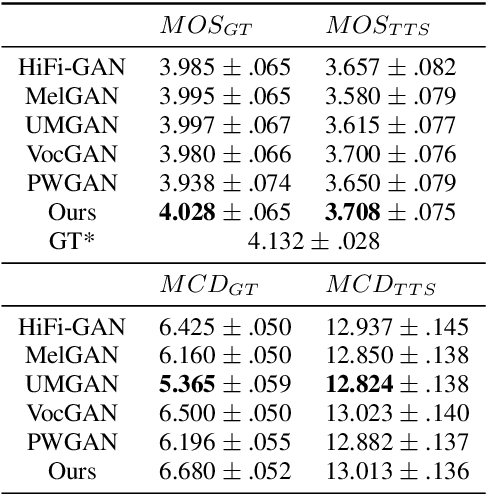
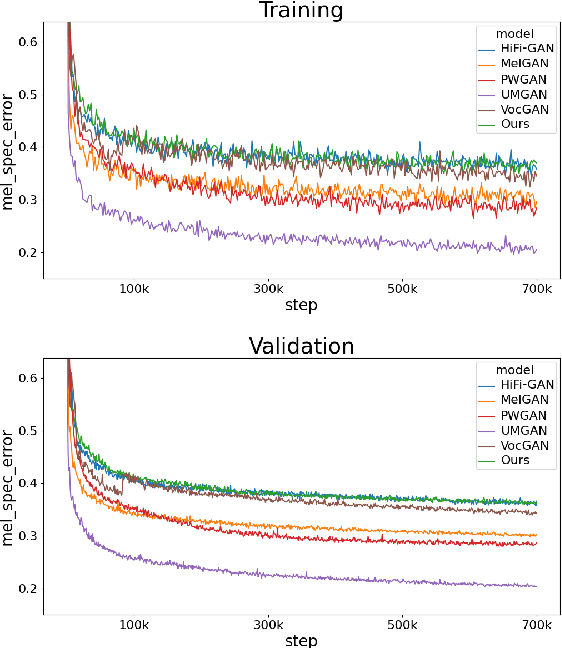
Abstract:Several of the latest GAN-based vocoders show remarkable achievements, outperforming autoregressive and flow-based competitors in both qualitative and quantitative measures while synthesizing orders of magnitude faster. In this work, we hypothesize that the common factor underlying their success is the multi-resolution discriminating framework, not the minute details in architecture, loss function, or training strategy. We experimentally test the hypothesis by evaluating six different generators paired with one shared multi-resolution discriminating framework. For all evaluative measures with respect to text-to-speech syntheses and for all perceptual metrics, their performances are not distinguishable from one another, which supports our hypothesis.
Axial Residual Networks for CycleGAN-based Voice Conversion
Mar 08, 2021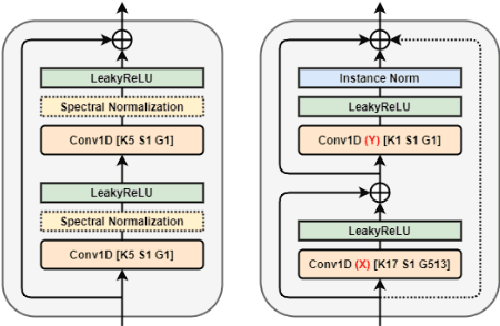
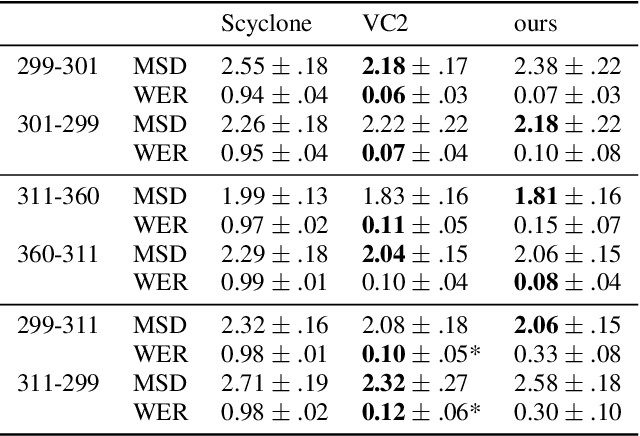
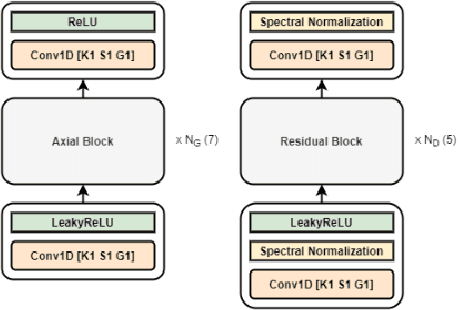

Abstract:We propose a novel architecture and improved training objectives for non-parallel voice conversion. Our proposed CycleGAN-based model performs a shape-preserving transformation directly on a high frequency-resolution magnitude spectrogram, converting its style (i.e. speaker identity) while preserving the speech content. Throughout the entire conversion process, the model does not resort to compressed intermediate representations of any sort (e.g. mel spectrogram, low resolution spectrogram, decomposed network feature). We propose an efficient axial residual block architecture to support this expensive procedure and various modifications to the CycleGAN losses to stabilize the training process. We demonstrate via experiments that our proposed model outperforms Scyclone and shows a comparable or better performance to that of CycleGAN-VC2 even without employing a neural vocoder.
 Add to Chrome
Add to Chrome Add to Firefox
Add to Firefox Add to Edge
Add to Edge